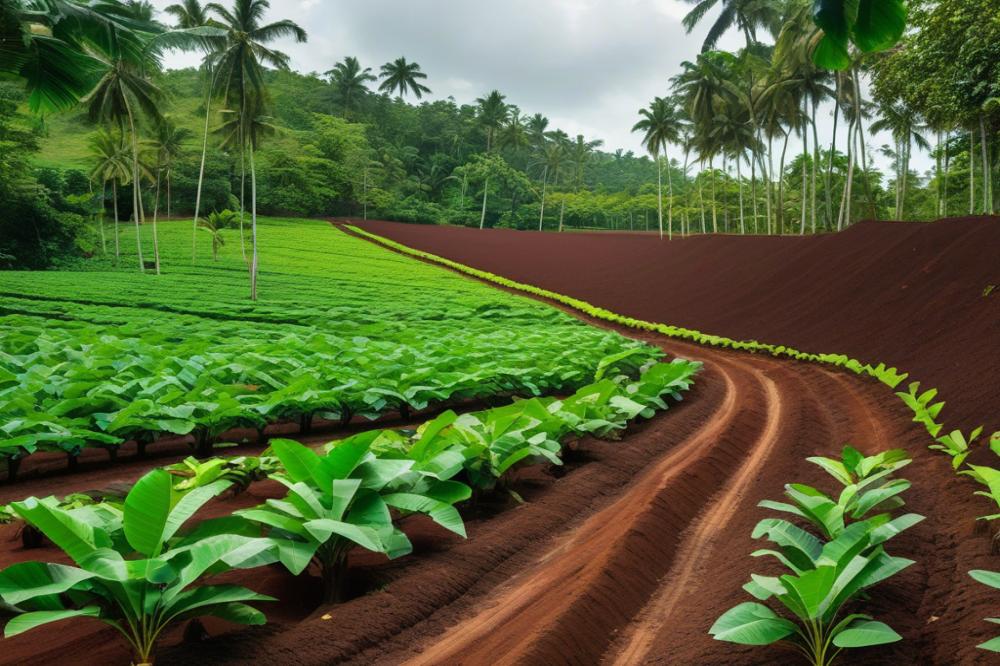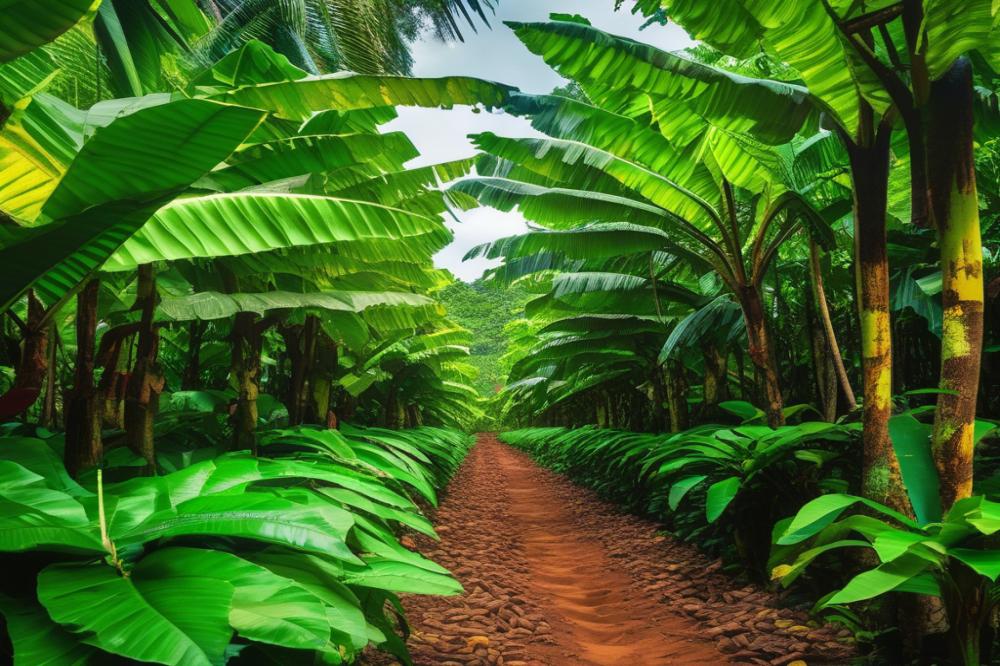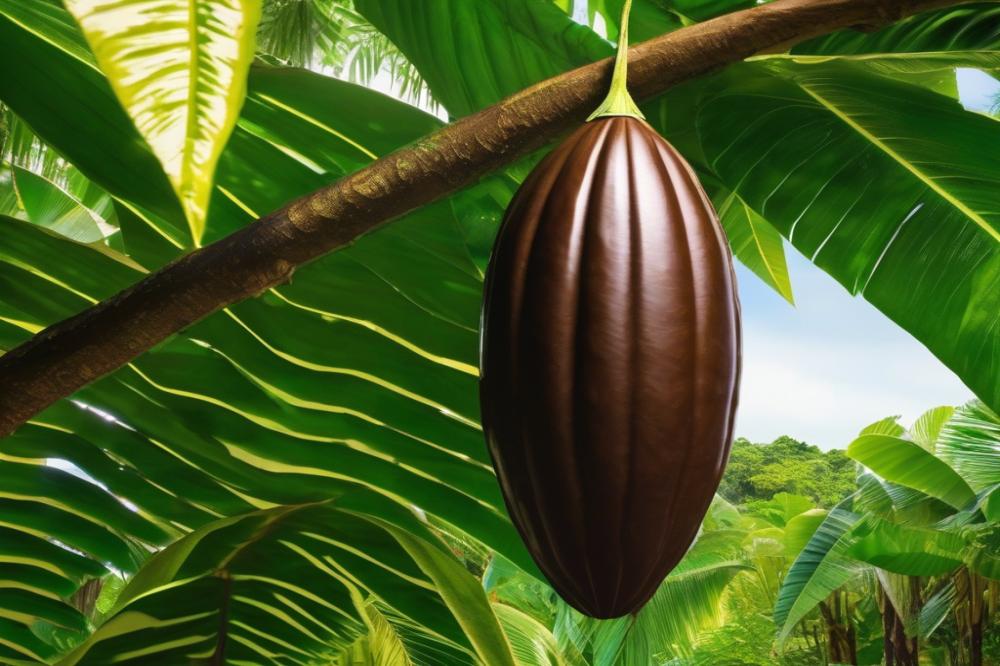Harvesting cocoa pods: Techniques and Timing
The Cocoa plant, known for producing cacao beans, holds a pivotal role in tropical agriculture. This tree thrives in warm, humid climates and is a key player in many countries’ economies. cocoa farming supports the livelihoods of millions of people. It is not just a casual crop; it’s a fundamental part of life in certain regions. These beans are transformed into chocolate, a delicacy enjoyed worldwide. Because of its high demand, understanding the processes involved in cocoa production is crucial.
Harvesting is a vital step in cocoa production. The process determines the quality of the beans and ultimately the flavor of the chocolate. Timely and careful harvesting can lead to better quality cocoa. Producers must employ various harvesting techniques to maximize yield and maintain the quality of the crop. Knowing when to pick cocoa pods is essential for a successful harvest. Fruits left on the tree too long can become overripe and affect the overall yield.
Good farm tools are essential for efficient harvesting. Harvesting cocoa requires specific implements to safely gather pods without harming the tree. Using proper techniques can prevent damage to both the plant and the cocoa pods. In addition to harvesting, attention to post-harvest processing is equally important. This stage also impacts cocoa quality and influences market value.
Farmers are increasingly focusing on sustainable farming practices. This approach helps in conserving the environment while producing high-quality cocoa. Techniques that prioritize sustainable methods ensure that the land remains productive for future generations. The timing of harvest plays a significant role in this as well. Understanding the life cycle of the cacao tree is important for ensuring a fruitful cocoa farming operation.
The journey from tree to chocolate bar begins with effective cocoa harvesting. This vital phase not only contributes to the economy but also influences global chocolate production. For those involved in this industry, mastering the art of harvesting can make all the difference.
cocoa harvesting Techniques
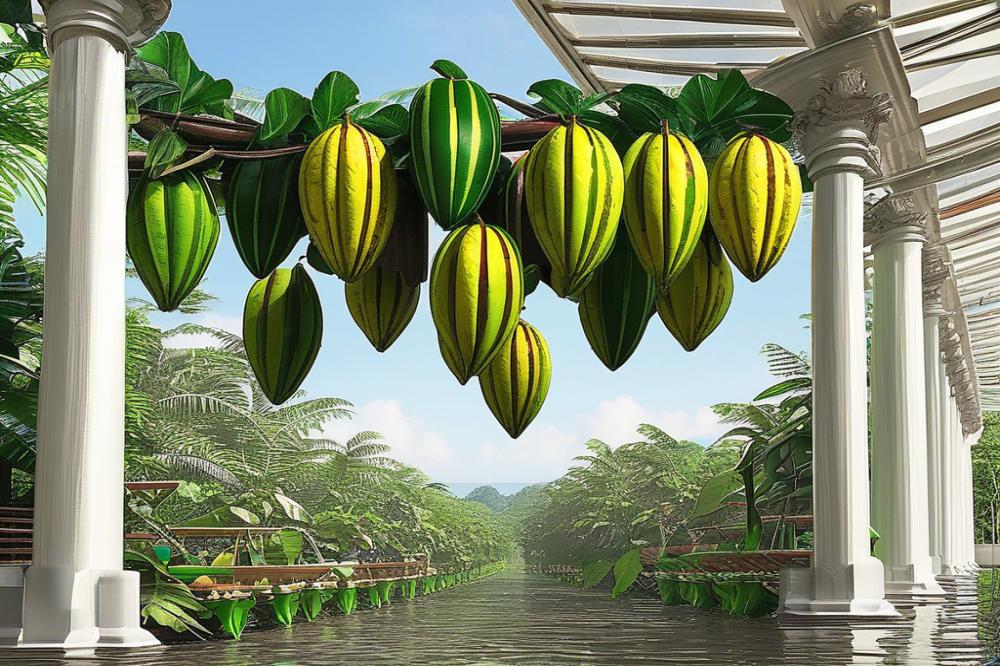
Harvesting cocoa pods is crucial in cocoa farming. Different techniques exist, each with its advantages and challenges. Understanding these methods can significantly impact cocoa production and quality.
Manual versus Mechanical Harvesting Methods
Manual harvesting involves workers using curved machetes, called machetes, to cut the ripe pods from the cacao tree. This method allows for selective harvesting, where only the mature pods are picked. Manual techniques lead to better cocoa quality since workers can assess each pod’s ripeness. However, it can be labor-intensive and time-consuming.
On the other hand, mechanical harvesting is becoming more common in large plantations. Machines can quickly harvest cocao pods, saving time and labor costs. Yet, using this method might cause damage to the trees and unripe pods. This approach may be more efficient, but it can be less careful than manual methods.
Importance of Using Appropriate Farm Tools
Using the right farm tools is essential in cocoa harvesting. Workers should use sharp, well-maintained machetes for clean cuts. Dull tools can crush the pods and damage the trees, leading to poor quality cocoa. Good tools also reduce the risk of injury.
A proper harvesting bag can make transporting pods easier. These bags should be sturdy and spacious to hold many pods without tearing. Proper tools play a critical role in ensuring an efficient and safe harvest.
Best Practices for Minimizing Damage to Cocoa Pods and Trees
Minimizing damage during harvest is vital in sustainable farming. It starts with training workers on picking techniques. Workers should avoid hitting the trees with tools. Brushing against branches or leaves can cause wounds that invite pests or diseases.
Timing of harvest is equally important. Ripe pods should be harvested promptly to prevent overripening and decay. Every pod needs careful attention, and workers should inspect them for quality. After harvesting, proper post-harvest processing is necessary to maintain flavor and aroma.
Caring for the cacao trees also improves long-term production. Regular pruning can help trees stay healthy and more productive. Good management practices will benefit the ecosystem and help produce quality cocoa.
Timing of Harvest
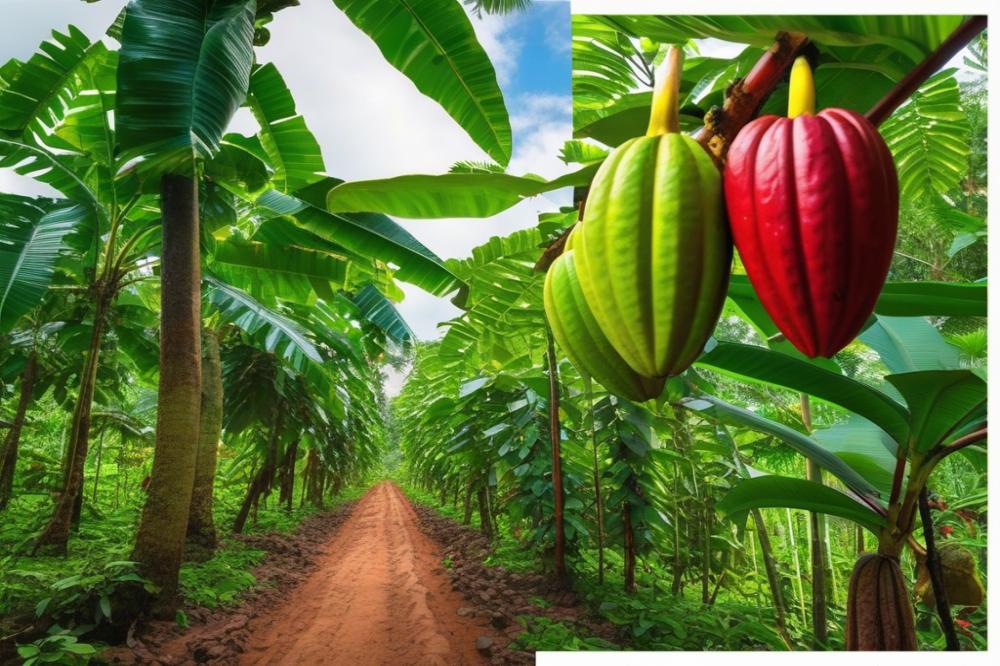
Harvesting cocoa pods at the right time is crucial for both quality and quantity. Farmers must pay close attention to when the pods reach maturity. This timing affects the overall cocoa production, influencing the flavor and fat content of the beans.
Several factors play a role in determining the best time for harvest. Weather patterns can significantly impact pod development. For example, prolonged rainy seasons may delay ripening. In contrast, dry spells can lead to early maturation. Soil health also impacts how well the cacao tree produces pods.
Monitoring the state of each pod is essential. The color change is a key indicator. When the pods shift from green to a bright yellow, red, or purple, they are nearing ripeness. Farmers often visit their plantations regularly, using specific farm tools to assess pod conditions. This attention can affect the final product’s cocoa quality.
Timing becomes even more important during peak harvest periods. If pods are left too long on the tree, they can become overripe. Overripe pods may split open and attract pests or diseases, leading to loss. Poor timing in harvest not only lowers cocoa quality but can also diminish the farmer’s yield.
Post-harvest processing also ties into the timing of harvest. Freshly harvested pods should be fermented promptly. Delays can result in undesirable flavors, further affecting market value. In sustainable farming practices, such timing considerations help maintain a balance with the ecosystem while enhancing productivity.
The knowledge of when to harvest comes from years of experience. Each region may have its unique challenges and timelines. Therefore, cocoa farming is an art as much as a science. Understanding these nuances can lead to successful outcomes in tropical agriculture.
Sustainable Farming Practices in Cocoa Harvesting
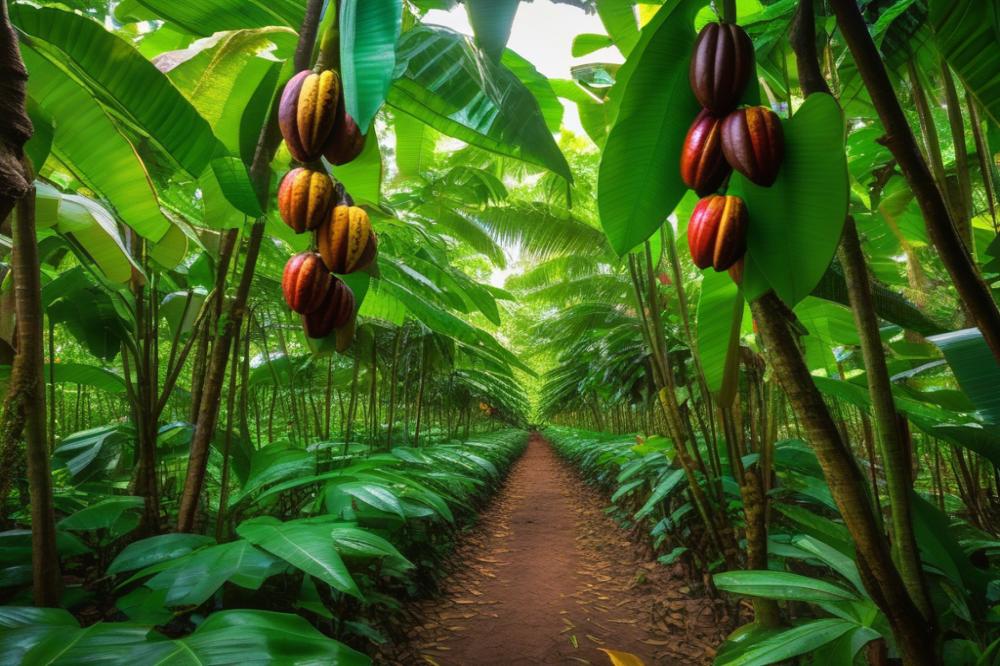
Overview of Sustainable Farming Practices in Cocoa Farming
Sustainable farming practices play a crucial role in cocoa farming today. These methods focus on protecting the environment while also boosting productivity. Farmers aim to balance economic gain with ecological health. They employ techniques that minimize chemical usage and promote biodiversity. Crop rotation and intercropping are common strategies. These practices help maintain soil quality and reduce pests.
Role of Sustainable Techniques in Improving Cocoa Quality
Using sustainable techniques can directly enhance cocoa quality. Organic fertilizers and compost improve the nutrients in the soil. Healthy soil leads to better cacao tree health, ultimately resulting in superior cocoa beans. Moreover, sustainable farming encourages the growth of native plants that provide shade. This shade helps protect the cacao trees from heat and reduces stress. Farmers who focus on quality often find that premium cocoa demands higher prices.
Benefits of Sustainable Cocoa Harvesting for the Environment
Eco-friendly harvesting methods provide numerous environmental benefits. Reducing the use of harmful pesticides protects local wildlife and waterways. Sustainable practices also help mitigate deforestation, a pressing issue in many cocoa-producing regions. By maintaining forest cover, farms can attract pollinators that enhance crop yields. Additionally, preventing soil erosion contributes to improved land health over time. These impacts create a more resilient ecosystem for future generations.
Examples of Sustainable Practices in Tropical Agriculture
Tropical agriculture showcases many sustainable practices relevant to cocoa farming. Agroforestry is one effective method where farmers cultivate a mix of trees and crops. This approach offers numerous benefits, such as shade and habitat for wildlife. Cover cropping, which involves planting certain crops during off-seasons, improves soil structure and prevents erosion. Another method is using organic pest control, which reduces the reliance on synthetic pesticides. These strategies are not only eco-friendly but also promote long-term productivity in cocoa production.
Post-Harvest Processing
Post-harvest processing plays a vital role in cocoa production. It determines not only the flavor but also the overall quality of cocoa. After the initial harvesting techniques are applied, the next steps are crucial. Farmers must act swiftly to preserve the beans before any spoiling occurs.
Overview of Methods Used in Cocoa Fermentation and Drying
Fermentation is an essential step after cocoa pod harvesting. During this process, beans are placed in shallow containers or wrapped in banana leaves. It lasts several days, allowing the natural sugars to ferment. Following fermentation, proper drying is necessary. Sun drying is a common method, involving spreading beans out under the sun. This helps reduce moisture content, preventing mold growth.
Impact of Post-Harvest Techniques on Final Cocoa Quality
The techniques administered during post-harvest processing significantly influence cocoa quality. If fermentation is insufficient, inferior flavors can develop. Similarly, improper drying leads to a poor final product. It can even result in off-flavors that many consumers dislike. The end goal is to produce high-grade products that satisfy market demands.
Best Practices for Ensuring Premium Cocoa Products
Farmers should adopt best practices that promote sustainability and quality. Monitoring the temperature and humidity during fermentation is crucial. Using farm tools correctly assists with efficient processing. Regularly checking the drying beans ensures they do not over-dry or spoil. Each step in post-harvest processing is interconnected. By paying attention to every detail, cocoa farming can yield better results.
Bringing It All Together
Proper techniques and timing in harvesting are crucial for the success of cocoa farming. When farmers pick pods at the right moment, they can greatly influence the quality of the beans. Each step in the process matters. Harvesting too early or too late can lead to lower-quality product, which ultimately affects everything from flavors to market prices.
Quality cocoa means a better experience for consumers and more income for farmers. Adopting good harvesting practices promotes sustainability too. Sustainable methods lead to healthier crops and healthier ecosystems. Farmers who focus on these techniques often see long-term benefits beyond just their immediate yield.
It is important for farmers to stay informed and adopt best practices in harvesting and production. Embracing modern methods can make a significant difference. Collaboration with experts and fellow farmers can lead to shared knowledge and improved outcomes. As the demand for high-quality cocoa grows, so does the need for effective methods. Taking the time to learn and apply these practices will pay off in the end.

